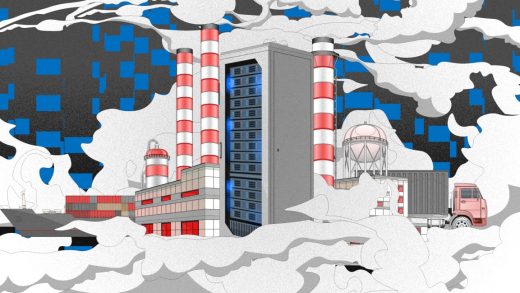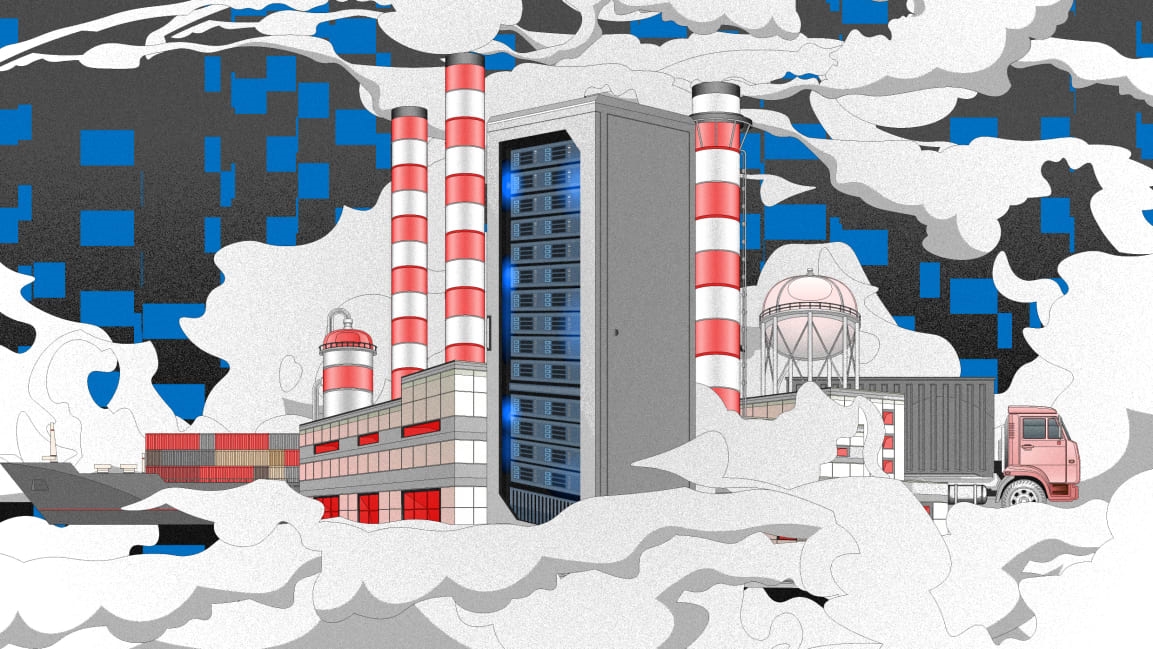This Al Gore-supported project uses AI to track the world’s emissions in near real time
As the world tries to figure out how to flatten the climate curve—cutting global emissions in half by the end of the decade, and reaching net-zero emissions by the middle of the century—one challenge is how to track current emissions from every power plant, farm, and other source on the planet. A new project called the Climate TRACE Coalition plans to use satellite imagery and AI to track those emissions in near real-time, even if they’re not being reported by the source.
“Although scientists have a good understanding how much carbon is in the atmosphere, it’s surprisingly tough to trace where those emissions come from,” says Gavin McCormick, the founder of a nonprofit called WattTime that also makes technology that enables smart devices to automatically reduce emissions. The startup is working with several other climate and tech organizations and the former vice president Al Gore on the new project. Right now, McCormick says, most emissions data is self-reported, and it can sometimes take years for the data to be gathered. “We think that technology, in particular AI and satellites, have the potential to change that pretty profoundly, which can influence sort of any sector that depends on really knowing where emissions are coming from to make good decisions,” he says.
“The time lag in current data makes it often non-actionable,” says Gore, who has been helping structure the project to have the maximum impact on the climate crisis and enlisting partners for financial and strategic support. “To draw an analogy, if you start your contact tracing for COVID-19 two weeks after the person knows he’s infected, it’s just not very actionable. But having near real-time data means that there will be, for the first time, accountability. We intend to trace all significant manmade greenhouse gas emissions, assign responsibility for them, and show multiple audiences—governments, NGOs, businesses, investors, activists, and others—exactly where the emissions are coming from in a timeframe that makes them actionable and holds the emitters accountable.”
At a power plant, for example, it’s possible to use artificial intelligence and machine learning to correlate satellite images showing from cooling vents with the weather and past emissions rates to estimate how much CO2 a power plant is currently pumping into the air. Satellite images that were previously used to track illegal fishing vessels can now be used to track emissions from ships. Each group in the coalition is working on specific sources of emissions from a sector like agriculture or the oil and gas industry. “There’s been so much progress in machine learning, artificial intelligence, and remote-sensing technologies in recent years,” says McCormick. “The key breakthrough here is we’re putting them all together.”
WattTime and another group, the U.K.-based Climate Tracker, first began to use AI to track power plant emissions through a $1.7 million grant from Google.org’s AI Impact Challenge last year. Separately, Gore was searching for better ways to track emissions as countries work to meet the goals of the Paris climate agreement. Gore and McCormick started talking about how to expand the project to every sector.
An early prototype is ready now, and the team plans to have a full version ready by next summer, in advance of the next United Nations Climate Change Conference. Countries can use it to track their progress in reducing emissions. Investors can use it to make decisions about where to invest or divest, using emissions data to evaluate a company’s long-term financial health. “When they have accurate real-time and near real-time data, then that’s going to be a very powerful motivation to shift investment funding towards solutions,” Gore says. Companies that might have fudged emissions data in the past could now be held accountable. “Those that are cutting corners will have to swallow hard and make some decisions about how they’re going to deal with the world knowing exactly what they’re doing when and how,” he says. Companies that are making real improvements can back up their claims of progress.
“We are seeing a lot of companies saying, hey, we would like our manufacturing supply chains to be cleaner, but we don’t actually know how to verify the emissions of our suppliers in other countries,” says McCormick. “This will make it possible for them to do things like that. We’re seeing other companies who say, ‘I need to justify to my CEO why we would cut our carbon footprint. And the problem right now is we have no way to prove to the world objectively that we really did go clean.’ And so I’m particularly excited about some of the corporate voluntary sustainability efforts all over the world where this will help folks who were right on the border of really going cleaner have the tools to do it.”
(24)



